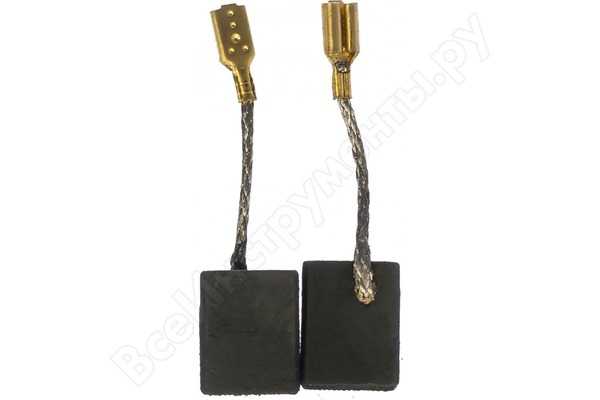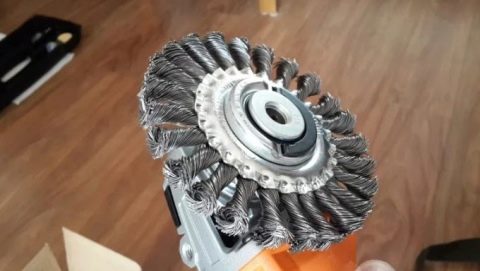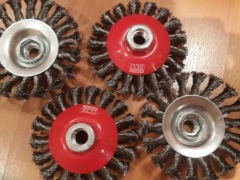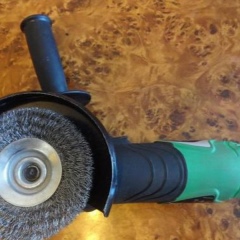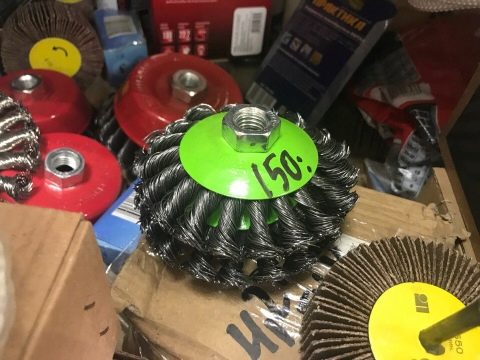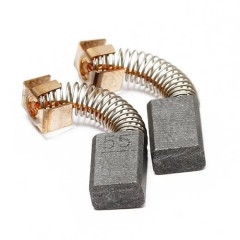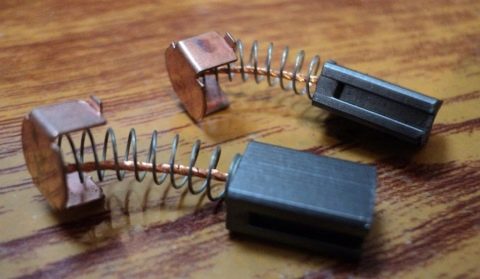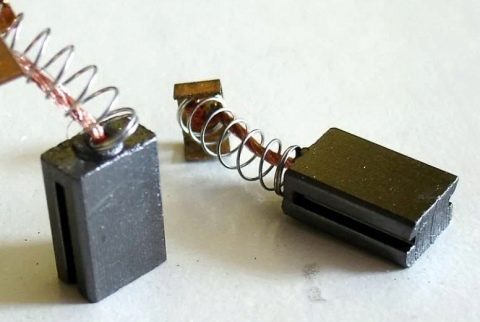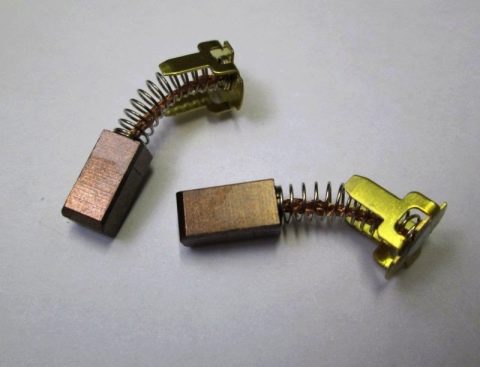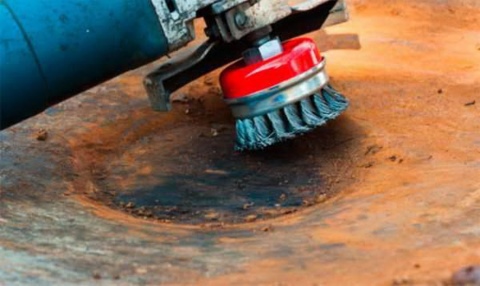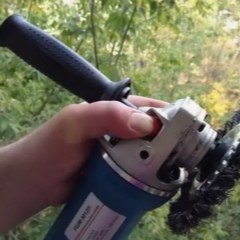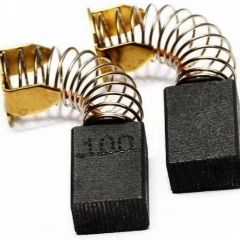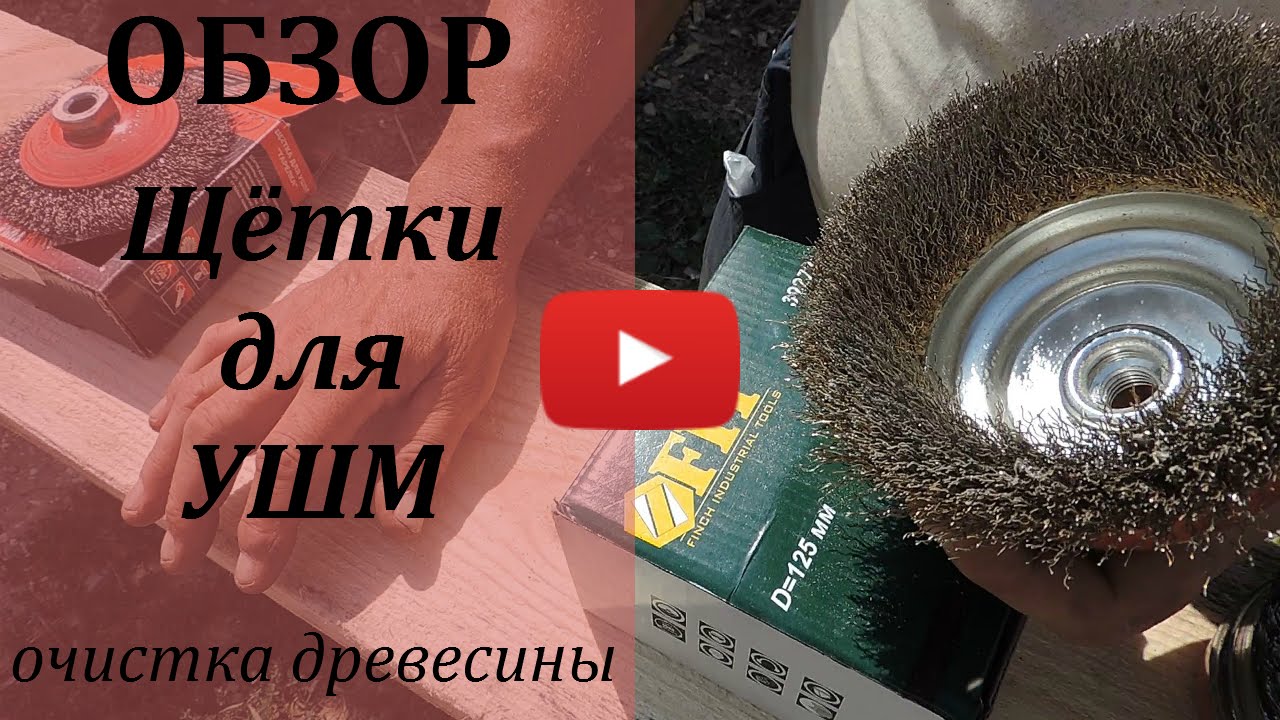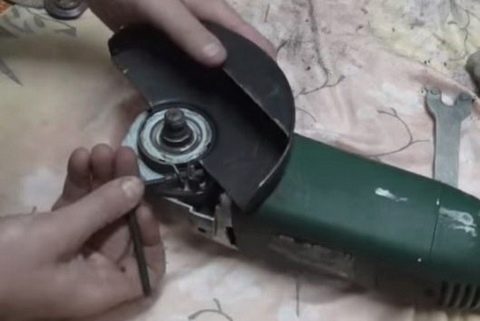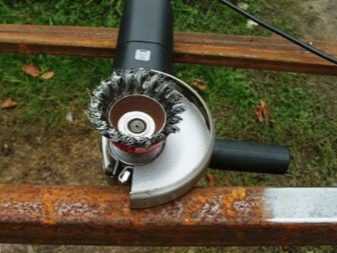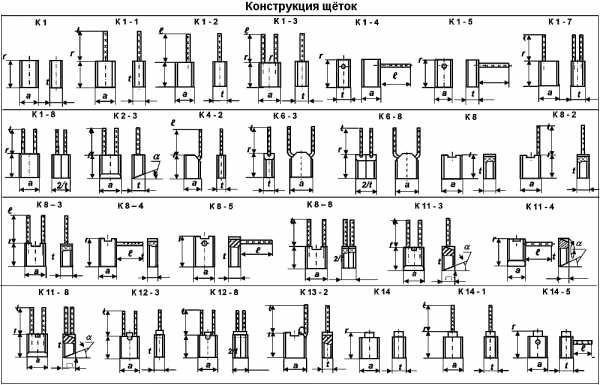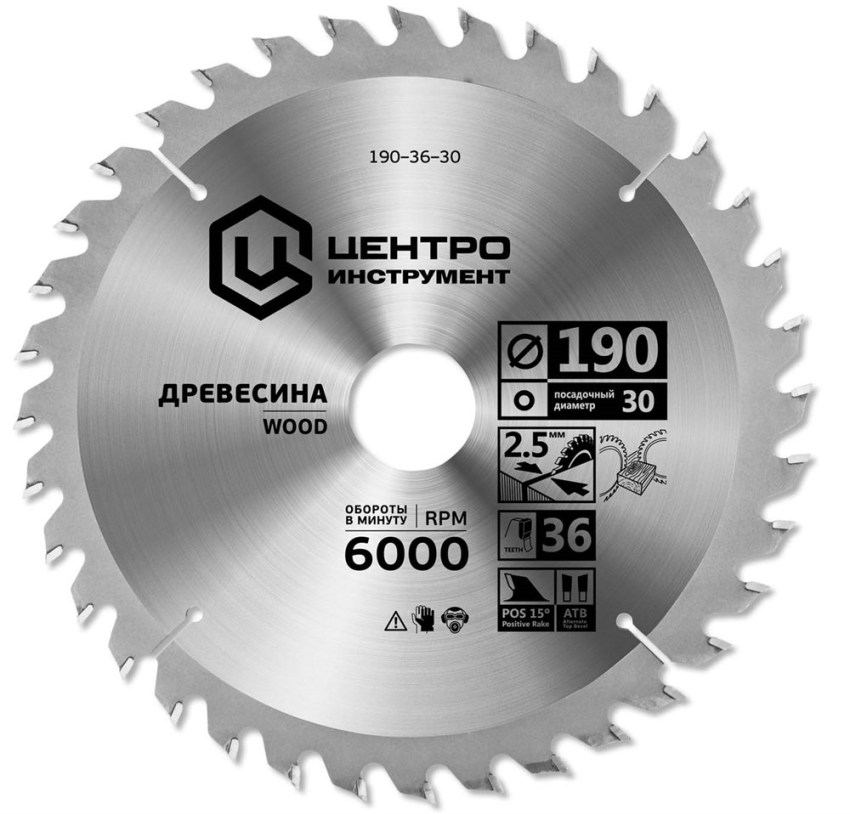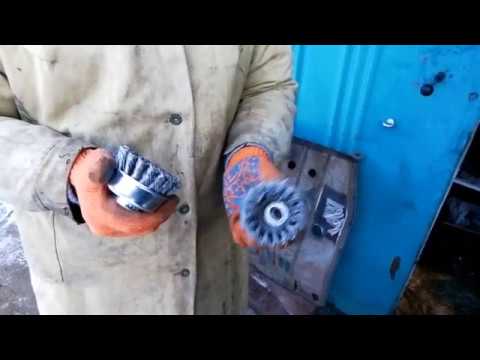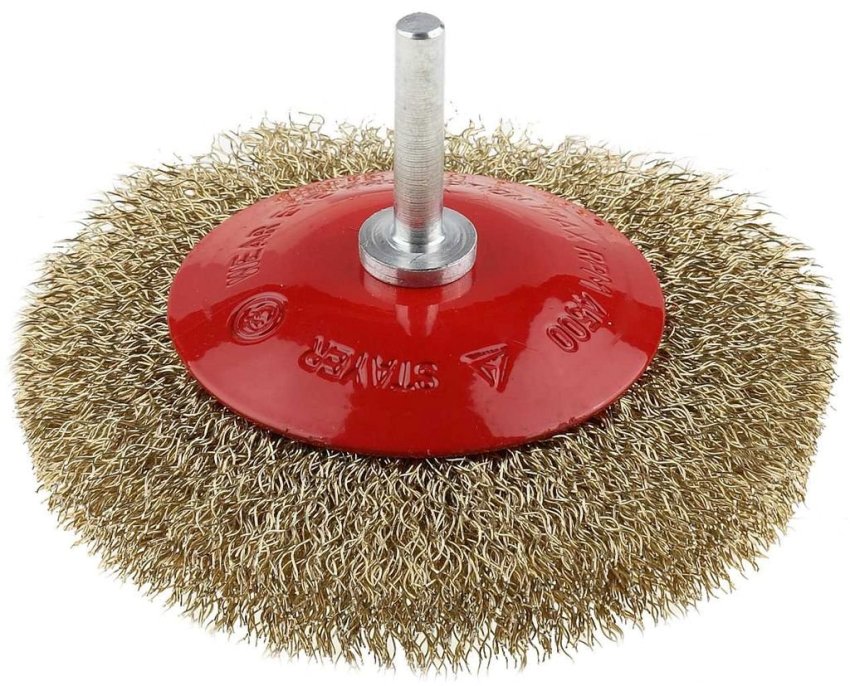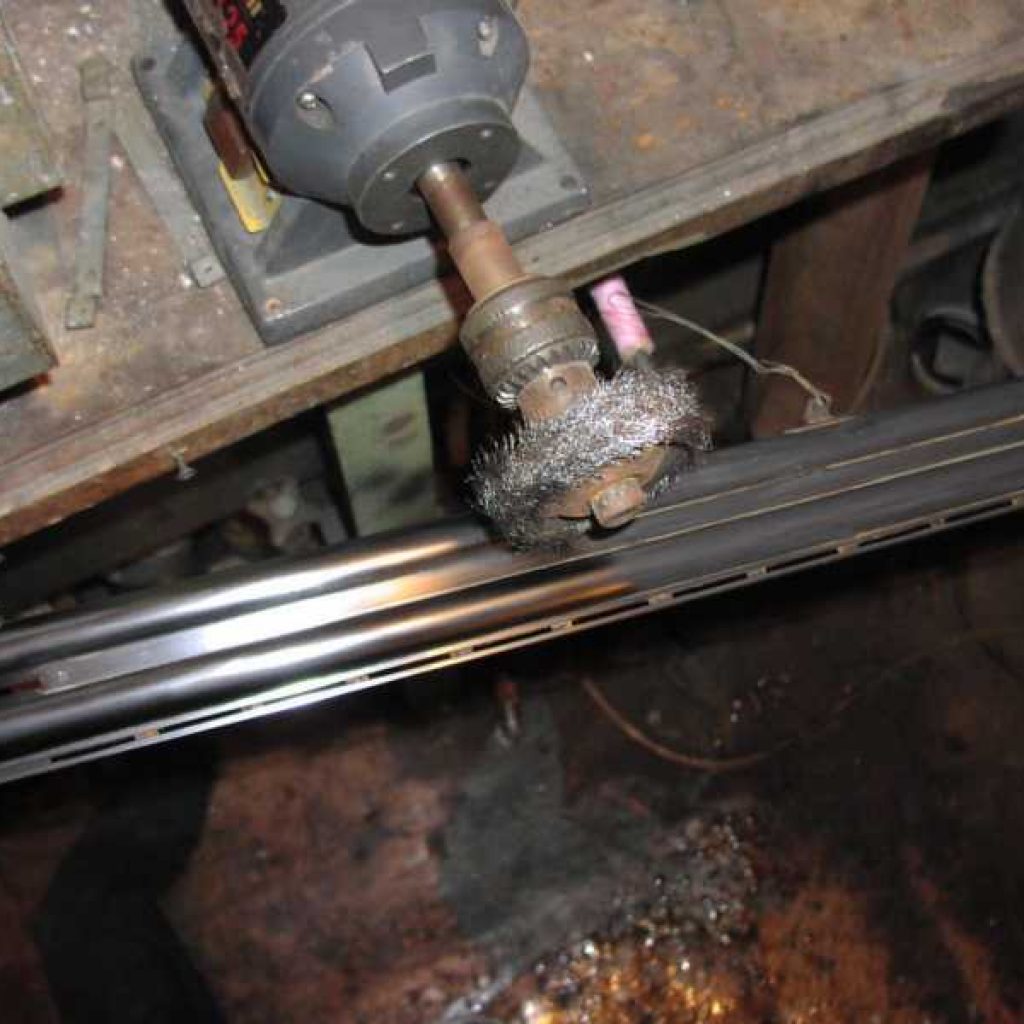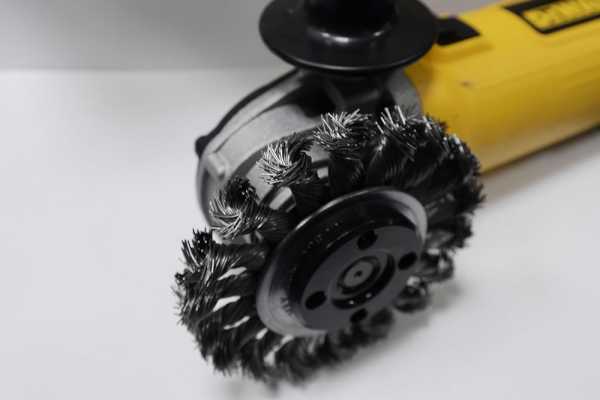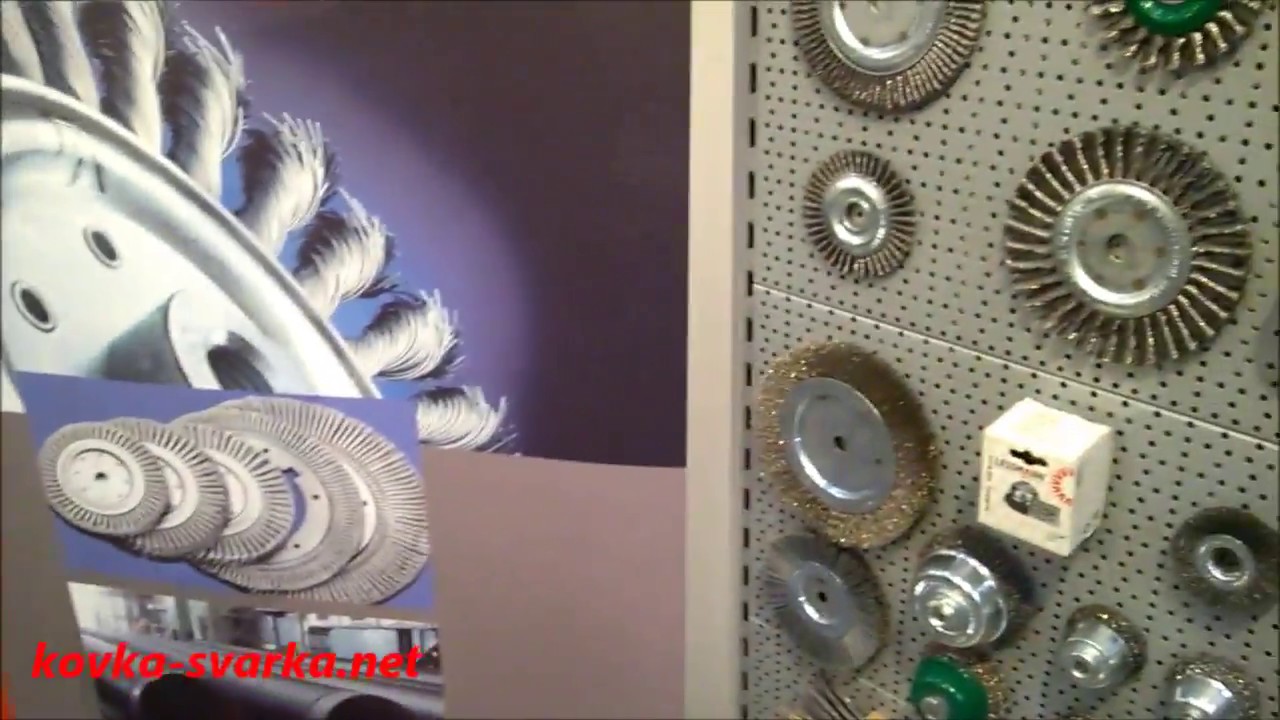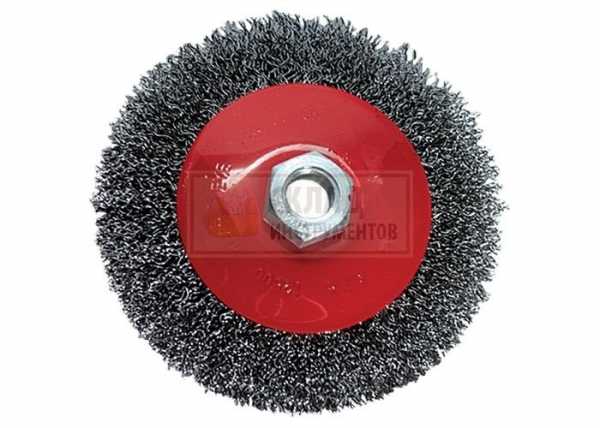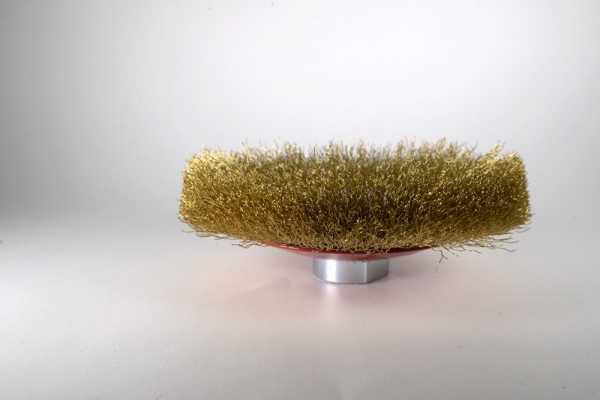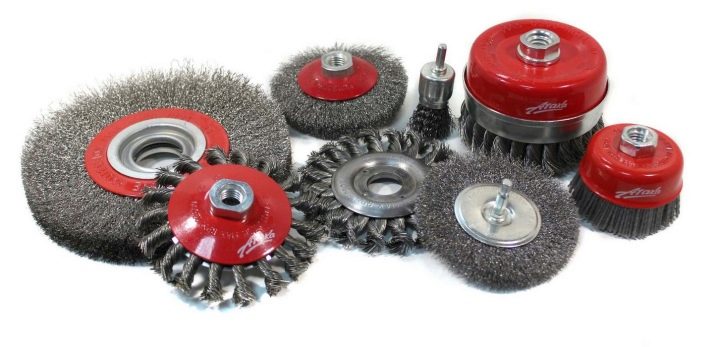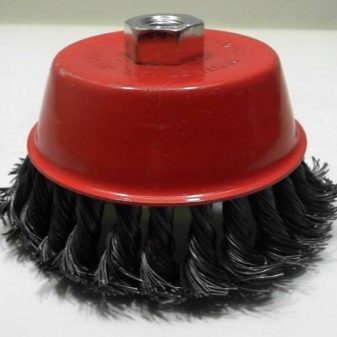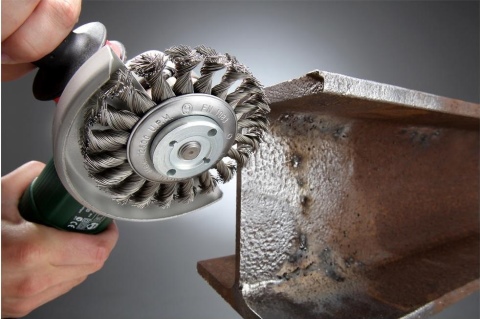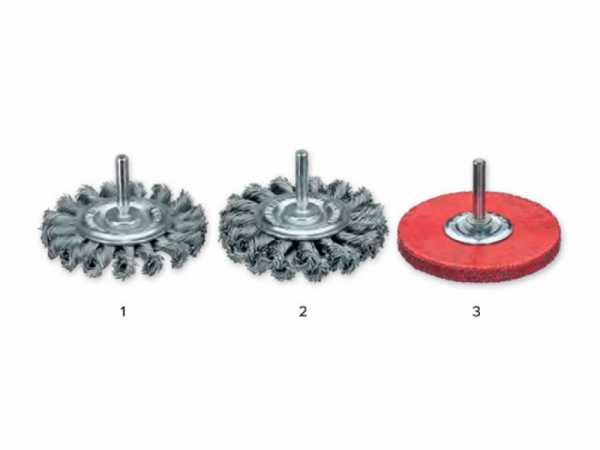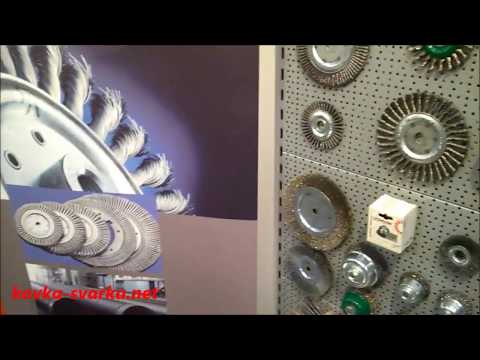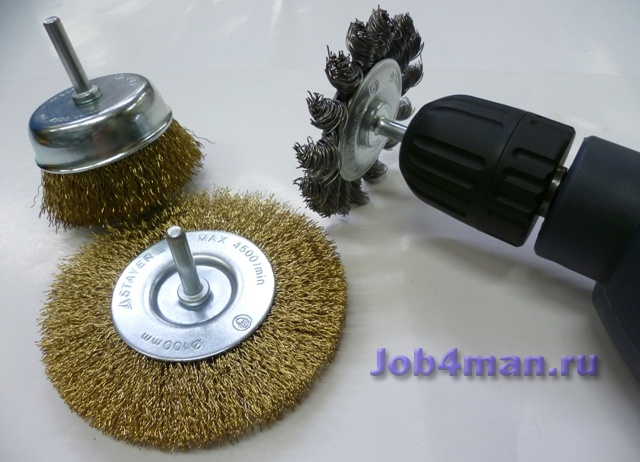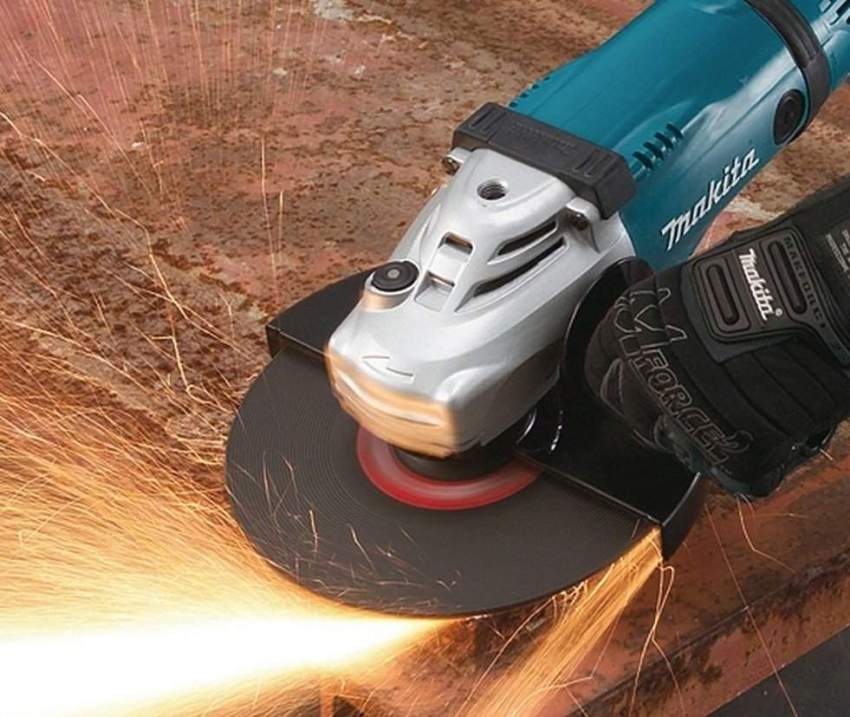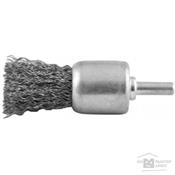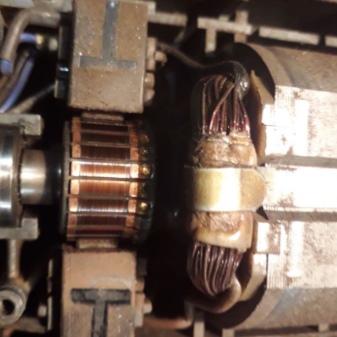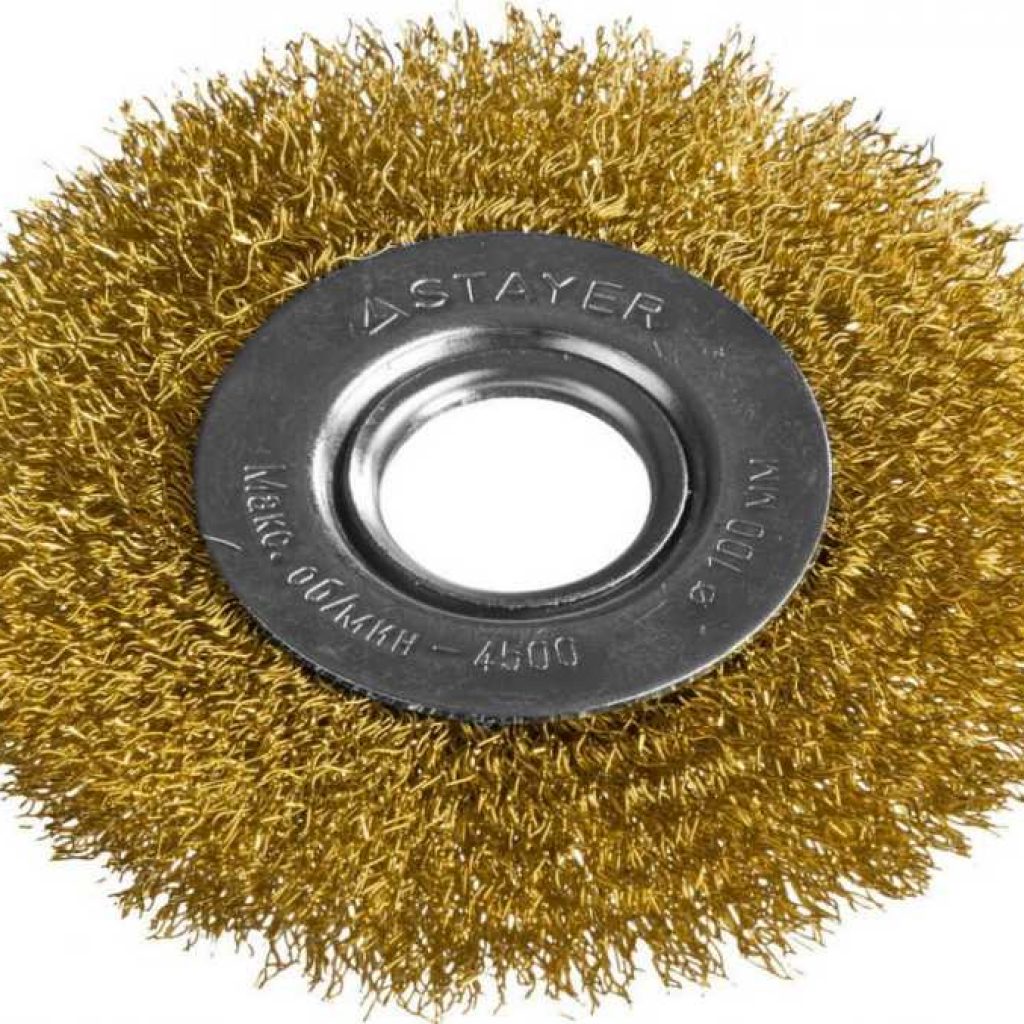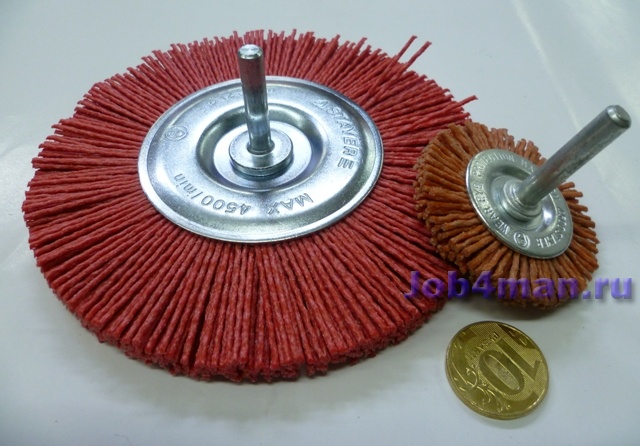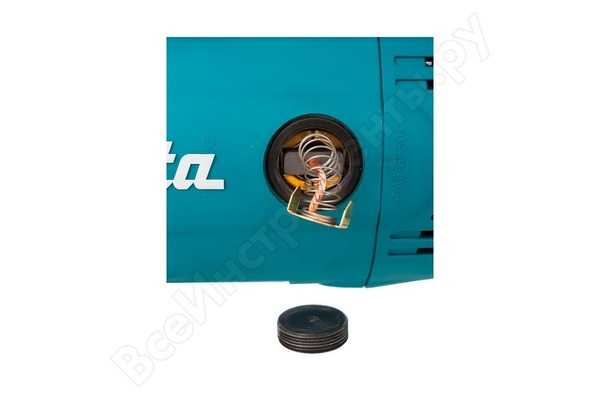Tips for choosing a blade size
It is the diameter of the disc that is the key factor that determines the area of work performed by the tool. It is worth noting that the rim for the wheels has a standard size of 22.2 mm. But, the larger the diameter of the cutting wheel, the higher the rotational speed and power of the grinder. The minimum diameter is 115 mm, the maximum possible is 230 mm.
The diameter of the disc is selected depending on the thickness that will need to be cut
Proceeding from the fact that not all, but only the part of the circle protruding beyond the limits of the tool can be used as a working one, it is necessary to pay attention to the size of the body. For example, if the case is about 60 mm wide, then when using a 125 mm disc, it is easy to understand that only half of its surface will work.
That is, it will be possible to cut through material no more than 35 mm thick, and in reality even less - 30 mm. After a while, the cutting surface of the disc will wear off, which will significantly reduce this indicator. With the help of such simple calculations, the required disk size is selected. But it is strongly not recommended to use circles with a larger diameter than allowed by the technical documentation.
To make it easier for you to navigate, let's take a closer look at the types of grinders, based on the size of the disc:
- A 115 mm angle grinder is the minimum size for the simplest work. Most often used for grinding, as cutting at this size is very inconvenient. Smaller diameter means less weight, which means less power. The weight is in the range of 1.5-3 kg, and the power is not more than 1000 watts. But the "small" grinder has the maximum number of revolutions - 10-11 thousand rpm. There is a possibility of gripping with one or two hands. The size of the instrument does not affect the price, and such a compact instrument can have both low cost and vice versa. There are models equipped with many additional functions for professional use.
- The 125 mm grinder is the most demanded model. It has sufficient power, weight and size optimal for ease of use, and affordable cost. In any store, the most extensive selection of grinding or cutting wheels with a diameter of exactly 125 mm. This is the best tool for home use if you do not plan to cut too thick parts.
- The 150 mm grinder - unlike the previous model, is not in such demand, although it is an excellent alternative for home use, if you need not a small, but also not a large model. It is convenient to carry out both grinding and cutting work with it. But many argue that a more convenient solution would be to buy a separate small - 125 mm and a large - 180 mm grinder. This tool has an average power of 1000-1500 W, an average rotation speed of 8-10 thousand rpm and an average weight of 3-5 kg. "Golden mean" for home craftsmen.
- A 180 mm grinder is a suitable option for construction work. The depth of cut will make it easy to cope with cutting bricks (however, you still need to cut from both sides), thick pipes and other elements. This means that doing smaller jobs with such a tool may not be very convenient.
- A 230 mm grinder is the maximum provided by the manufacturers. It is called the "big" Bulgarian. It has a more substantial weight - 5-8 kg, a powerful engine - 1500-2000 W, speed of revolutions - 6-8 thousand rpm. They are equipped with two handles - stationary rear and lateral with the possibility of installation on different sides of the body. They are distinguished by their high cost, which is justified by the number of built-in functions. With its help, they perform rough work where the use of force is necessary, for example, cutting metal pipes, chipping walls for wiring, etc.For small jobs, such models are absolutely not suitable, even grinding seems unlikely. But in case of major repairs or construction work, they will come in handy.
Having analyzed the five possible sizes of this tool, it is clear that each has its own advantages and disadvantages. If you are engaged in construction work at a professional level, then the best solution for you would be to purchase two grinders. Small - 125 mm for precision work and medium - 180 mm. If you have to renovate or build, then a 150 or 180 mm tool will do.
What kind of brushes are there?
Metal, bowl-shaped bristles appeared relatively recently. And before that, grinders worked mainly with different types of sandpaper or sanding stone discs. Paper, no matter how high their rigidity, quickly clogged with paint particles or was erased. It often had to be changed, which reduced work productivity. Working with a metal brush for a grinder is much more effective in this regard.
Virtually every leading tool manufacturer has seen the need to bring their brushes onto the market. And each manufacturer has its own approach, its own exclusive in the development and manufacture of a metal tip for angle grinders. Some worms are made from a single thin wire, others from a twisted cable, and others from a corrugated corrugated wire. Wire cord brushes differ in diameter, stiffness, and bristle quality. Cushions as attachments for angle grinders are:
- Cup
- Disk
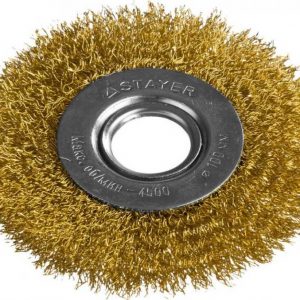 Metal brushes are made from:
Metal brushes are made from:
- become;
- brass plated steel;
- brass;
- copper.
There are polishing brushes for metal surfaces and woodworking. They are made from nylon and other polymers, dried seaweed, cotton fibers.
The rigidity of processing depends on the structure of the wire, its hardness and thickness. The thinner the wire used in the manufacture of the brace, the softer it acts on the metal. To clean the surface of old paint at the initial stage, it is better to use a nozzle with a stiff bristle, and for the final cleaning of the remnants of primer and other materials, a nozzle with a lower rigidity is suitable, which will not "eat" the bare metal.
Wire is used for the manufacture of corsets:
- Corrugated. This brush, due to its springy properties, softens, on the one hand, the impact on the metal, and on the other hand, reduces the vibration of the machine.
- Twisted. The twisted bristles provide rigidity to the surface, break less and fly out as they wear out. The twisted fragments unwind, freeing the bristles for work.
- Smooth.
Brushes differ in the diameter of the cup, which determines the parameters of the simultaneously processed surface. Corridors for angle grinders are consumables, but manufacturers are concerned about making them as efficient as possible and extending their service life.
How to choose?
In stores, the choice of cord brushes for a grinder can be very wide. Consider what you need to consider when choosing this type of attachments. The selection parameters may be dictated by the nature of the work to be done and the size of the angle grinder on which the brush will be installed. In no case should you install a nozzle designed for a large unit on a small grinder
It is also important to know the number of revolutions of the grinder, the brush must be selected in accordance with this indicator. If there is a circle designed for low speed on a fast grinder, its effectiveness will be small, since, most likely, it will fail even before the end of the work
Working on a "slow" grinder with a nozzle for a revolving unit will be very laborious and will take much more time than with a brush that matches the capabilities of the angle grinder.
If you have decided on the size and type of brush, you should pay attention to its quality. The wire iron bristle should have a uniformly distributed pile, individual villi should not be longer or shorter, this factor can cause poor-quality surface treatment and excessive vibration, therefore, loads not only on the grinder's parts, but also on the hands of the person who will perform the work
Excessive vibration of the machine during operation is the main reason for the high stress on the muscles of the arms. With a small diameter brush, vibration is always less. A polymer brush is the lightest type of cord brushes, and the vibration with it is the least, but not every surface can be processed with such a nozzle. A polymer-abrasive brush is used for brushing (aging) wood, and you should not try to process metal with it.
If you have no experience with cord brushes, of course, you need to consult, and sometimes you have to purchase several different attachments in order to determine the best model in practice in the process of work. The most popular manufacturers of cord brushes, presented on the shelves of specialized stores, can be built into a kind of rating. Russian brands: Zubr, Praktika, SibrTech, Enkor. Foreign: DEXX, FIT, MATRIX, Lessmann, Wortex.
Classification
As already mentioned, electric brushes can be classified according to the material from which they are made. A graphite brush, as the name suggests, is made from graphite, to which soot and bonding elements are added. This type of slip ring is most often used for UMSh.
The carbon brush is made of the same material, but without heat treatment. Such a product wears out much faster and is practically not used for a grinder
It is important not to make a mistake when purchasing replacement brushes. Carbon brushes on a grinder will not last long
The metallographite brush is used in large industrial units, and it is unlikely that it will be possible to install it on a grinder. It is the most durable product with a very high price tag. The variety of cord brushes is much greater, their shape, material and size vary significantly, which is determined by the variety of applications for such equipment. They can also be classified according to the material from which they are made. The most popular are brushes with metal bristles. The metal brush is a fairly versatile attachment. For the manufacture of such products, both metals and alloys are used.
For work on metal, steel brushes are used. Stainless steel brushes are best used on stainless steel or aluminum. Often steel pile is covered with brass, such brushes do not corrode. There are also pure brass brushes - despite their great softness, they have a number of advantages: a relatively soft effect on the material, no sparks when working at high speeds, no scratches during surface treatment.
The wire for such brushes can be different. Twisted wire is usually the toughest, and can be bundled (stiffer and self-sharpening) or chaotically secured. These efficient attachments can be used to scrape off welding scale or rust. The corrugated cord brush has a wave-like curved pile and, unlike the previous type, does not affect the surface as intensely. With its help, you can clean the surface from old paint.
Smooth bristle brushes are widely used, they are the most versatile and can be used on any surface. Their efficiency may be slightly lower than that of specialized attachments. Nozzles with polymer bristles, such as nylon, are used for polishing various surfaces, including metal. They can be successfully used for woodwork - for texture selection or finishing.Plastic brushes are often used on soft materials.
The brushes can also be divided according to their shape.
The cup is used for working with large surfaces. Its form follows from the name. On such a brush, a clamping nut is most often immediately fixed, since the special key provided in the kit with the grinder cannot be applied to it. The conical brush is used for working with concave surfaces. Radial, as a kind of flat brushes, is used to process hard-to-reach areas. Disc, the most common type of cord brushes, also has a flat shape and can be used to process a wide variety of small surfaces.
And more cord brushes are divided into size groups. The diameter of the brushes is determined by the technical capabilities of the grinder and the scope of this attachment. Brushes with a diameter of less than 115 mm are usually used for small surfaces. It is better not to use a circle of more than 200 mm for a small grinder, you will have to remove the protective casing, and this is a violation of all safety standards. Such large brushes are usually used for processing large structures and only with the help of large powerful UMSh.
The most acceptable for domestic purposes is the diameter of the brushes 125 mm. It is possible to offer a fourth classification of cord brushes - by application. Brush brush, the name is given from the name of the technical operation, which is carried out using this nozzle. Brushing - preparation of the surface for subsequent processing: removal of rust, paint, dirt. At some stages, this is a process of chemical action on the surface of the product, but the initial treatment consists in mechanical cleaning of the surface. For mechanical brushing, metal (steel or brass-coated) brushes are used. The task of such processing is to remove scale, oil stains, small defects, burrs, and the like. Without brushing, it is sometimes difficult to assess the quality of the weld, the adhering scale can hide some defects.
Brushing as a process of working with a brush
 Brushing is the process of treating metal surfaces with metal brushes in order to remove loosened sludge or scale formed during the etching process. This work can be done manually or with power tools. The brushes for angle grinders themselves are called brushes. With this treatment, the porosity of the galvanic deposit decreases, it becomes denser. The surface to be treated is more uniform.
Brushing is the process of treating metal surfaces with metal brushes in order to remove loosened sludge or scale formed during the etching process. This work can be done manually or with power tools. The brushes for angle grinders themselves are called brushes. With this treatment, the porosity of the galvanic deposit decreases, it becomes denser. The surface to be treated is more uniform.
Brushing of steel surfaces is carried out with steel brushes with a wire diameter of 0.2–0.4 mm. Non-ferrous metals are treated with copper or brass wire brushes. Electroplated coatings are also brushed in order to increase the density of the coating and give it a gloss.
Brushing is performed according to:
- dry surface;
- surfaces wetted with water, soap or soda solution.
When brushing with metal brushes, abrasive pastes are not used, since the ends of the wire bristles serve as an abrasive.
4 Brushing angle grinder and safety precautions
When working with angle grinders, it is very important to be collected and extremely attentive. And, of course, it is unacceptable to work under the influence of alcohol.
The protective cover must not be removed. Working without it is dangerous not only for health, but also for life. It is very important to exclude any possibility of spontaneous rotation of the casing. Sometimes it really interferes with working with angle grinders, but the saved life and health are worth some inconvenience.
 Protective casing angle grinder
Protective casing angle grinder
The second necessary element will be glasses. During the processing of the product, sparks, rust particles, small metal shavings fly. Eye contact can cause inflammation or damage, which subsequently leads to vision problems... Since the trajectory of the particles is complex, the glasses or mask should fit tightly around the face.Gloves and mittens must be worn - hands also need protection from sparks and small particles.
Useful additional functions
More expensive models are equipped with a number of additional features. For example:
- The case will be very useful if frequent transportation of the tool is expected, and just for storage and protection from dust, from accidental impacts. The grinder must be securely fixed in special grooves. The case can accommodate all the necessary keys and disks.
- The soft start system keeps the load on the motor to a minimum. When the tool is turned on, the RPM will be at a minimum, gradually increasing. This will prevent the internal parts of the gearbox from being hit by a sharp blow and from biting the disc in a hard surface. Accordingly, such a tool is easier and more convenient to use.
- Locking the start button also makes work much easier. You do not need to constantly hold the power button in a clamped state, which always quickly gets your hands tired. With the help of a small additional button located next to the launcher, you can fix it in the on position.
- Adjusting the rotational speed of the disk - this function is present in expensive professional models. You can independently set the required rotation speed depending on the work performed and the diameter of the working disc. This will eliminate the need to purchase multiple tools. But if you do not have the skills to work with a grinder, difficulties may arise in choosing the modes on your own, and the end result will not meet expectations. Curved cuts and other troubles can turn out.
- Stabilization of the speed depending on the load on the disc. This function is useful regardless of the user's skill. The tool automatically selects the optimal number of revolutions and optimizes the workflow. It is very useful when working with heterogeneous materials that have a soft outer coating and a hard core, or vice versa. The electronics recognize the change in load and instantly adjust the speed.
- Dust protection is very important when working on concrete surfaces. The gearbox and shaft will be reliably protected from the ingress of small abrasive particles. The service life of the grinder depends on this. Models with such a function are very expensive, so if you are not engaged in construction, then in a domestic environment you can do without it.
- Automatic disc balancing is inherent in very high quality instruments. The point is that the angle grinder smooths out the beating that occurs when the working edge of the disc is unevenly erased. This is very useful for polishing work. You will notice the difference in working with the tool with and without this function in an hour.
- The ability to connect a construction vacuum cleaner makes the work more comfortable, allows less pollution of the surrounding space, the tool itself and the worker's respiratory tract. This is an alternative to the built-in dust protection function at a more affordable price.
- Auto power off will be helpful during power outages. If the light turns off during operation, an automatic machine will work, which will turn off the power to the grinder, and it will not start rotating when the power is restored.
How to choose brushes for a grinder
New technologies involve the production of brushes by pressing carbonaceous material at high temperatures. This method increases the life of the parts due to less wear.
There are several main types of this part:
The most common are graphite brushes. For this, the main material from which the part is made is shaped. Then it is covered with a graphite layer and fired at temperatures from 2500 degrees. The result is a strong, wear-resistant connection, the benefits of which pay off the high cost.
The most reliable option is considered to be metal-graphite brushes. The composition of the coating, in addition to the carbonaceous material, includes copper with the addition of lead, tin or silver. Such parts are rarely purchased for household appliances due to the high price.
To summarize: replacing brushes is an important part of the grinder's maintenance. Inattention in this regard can lead to more serious damage, such as destruction of the armature collector plate.
When replacing, it is important to properly disassemble and assemble the mechanism, along the way lubricated its main components.
When deciding which brush is better in a particular case, it is better to refer to the instructions or those passport of the device. If you have additional questions, it makes sense to seek advice from the service center.


